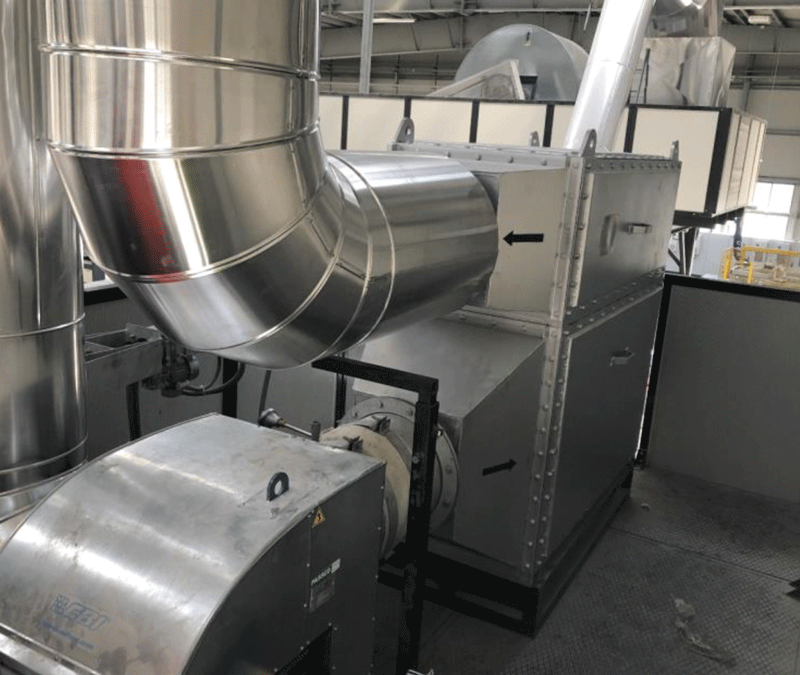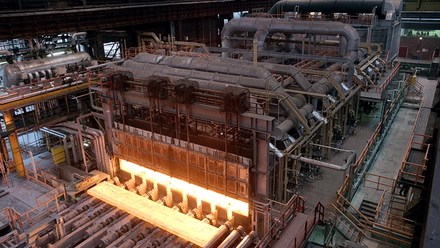Tile maker saves waste heat
A new type of heat exchanger at an Italian ceramic tile factory is recovering more than 40% of waste heat for reuse.

Perched next to the cooling section exhaust stack, the heat pipe heat exchange (HPHE) system at Atlas Concorde’s site, near Modena, uses the recovered heat to warm up the high-pressure water needed for manufacturing. Two UK teams at Brunel University and system manufacturer Econotherm Limited have collaborated since 2014 to design and fabricate the system to integrate with the company’s factory.
The 0.7MW waste heat recovery unit was built after a 100kW heat exchanger was installed at a new-generation roller hearth kiln at Atlas’ Mirage tileworks in 2019 for the EU-funded project, Design for Resource and Energy Efficiency in Ceramic Kilns. Atlas now recovers more than 2,500MJ each working hour – two months’ worth of power for the average UK home.
Professor Hussam Jouhara, Head of Brunel’s Heat Pipe and Thermal Management Research Group, explains that this energy offsets the heat that normally comes from burning natural gas. Natural gas is used in the ceramics industry for fuel burners that dry slip, a water and clay mix, and to heat large kilns to 1,250°C.
Discussing the design process, Jouhara says, “The challenges are mainly to do with the nature of the hot stream [in terms of] composition, particle loading and temperature, and the available footprint for the system.” The team also had to prevent the acids from condensing during the cooling of the exhaust gas, particularly sulphuric acid.
They believe the heat pipe technology is one of the most efficient and passive ways to transfer heat from a hot source to a heat sink. An evaporator boils the working fluid into saturated vapour that travels through an adiabatic section to the condenser, where the fluid vapour condenses and releases working fluid back to the evaporator. The team suggests that HPHE technology is a good candidate for most of the corrosive, high-fouling and high-temperature exhaust applications, due to the isothermal surface, high thermal conductivity and independency of each heat pipe in the system.
“To select the metals and materials for the heat exchanger, a comprehensive knowledge of the exhaust and heat sink fluid characteristics [are] needed,” adds Jouhara. “This is crucial to ensure the heat exchanger metals and materials will not corrode during the system’s operation.”
Carbon steel is used for most standard waste heat recovery processes, but for specialist applications, more premium stainless-steel alloys are needed, he explains, such as SS304 and SS316. The resulting heat exchanger can deliver pressurised hot water at 167°C, while avoiding clogging from the high particle content in the exhaust.
Projections after six months of operation estimate that the tile producer will save 205.5t of emissions a year, as well as £28k per annum. Jouhara says Atlas is now considering replicating this system across all its sites.
“[The custom design] is the main reason why straight replication is not possible…However, once the first system is installed and validated, the Technology Readiness Level (TRL) then becomes high enough to leave the manufacturer to deal with such requests directly,” explains Jouhara.
“The sizing of the system would need to be [reviewed for other ceramics manufacturers] so its cost is recovered with 24 months – through the value of the recovered energy – as a maximum.”
The Atlas Concorde heat exchanger is one of three new types developed for the EU-funded Etekina project. The other two designs will be installed at a Slovenian steel factory and a Spanish aluminium casting plant.
Next steps include researching how to cool the exhaust stream to below the water vapour to recover the latent heat, while avoiding corrosion from the condensing exhaust acids.


